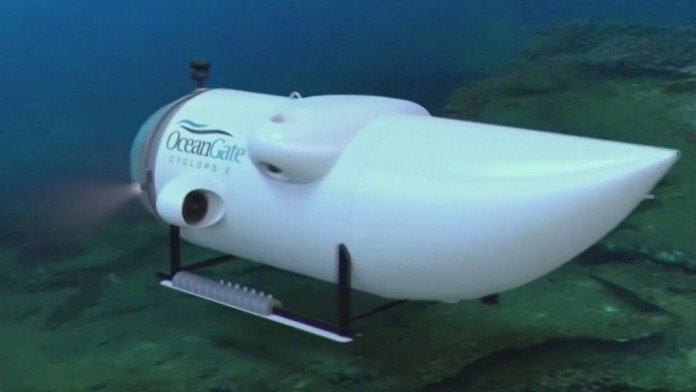The OceanGate five-person submersible experienced a catastrophic implosion. A violent inward collapse that led to the death of all the passengers on board. The U.S. Coast Guard Rear Adm. John Mauger said the debris field located at the North Atlantic led to the instant conclusion of their death.
According to Mauger, the submersible lost signal with the surface ship 1hr 45minutes into the dive, and the vessel was reported overdue at 9.13 pm local time on Sunday.
A U.S. company—OceanGate, organized the expedition as one of the activities of an eight-day trip to a wreck site, with each guest paying $250,000. U.S. Coast Guard said as of Monday afternoon, the watercraft had at least 70 and 96 hours of oxygen available to the passengers.
Here’s what you should know about the Titanic submersible Implosion;
The Missing Submersible
Submersibles are operated watercraft for observing and documenting underwater environments, exploration, media production, research, and search of shipwrecks. They have an outlook port that allows passengers to see outside and outside cameras that show a broad view of the submersible.
The disappearing submersible is OceanGate Titan watercraft that can accommodate five people to a depth of 4,000m. The Titan’s length is about 6.7m, with a speed of nearly 5.5km per hour. However, evidence shows that the Titan was diving independently in contrast to submersibles connected to the surface vessel.
OceanGate co-founder Guillermo Söhnlein said, “The window available for rescue is longer than most people think.” He, however, added that “Thursday (June 22nd) is a critical day in this search and rescue mission.” In addition, Söhnlein noted that the crew would have likely tried to extend the limited oxygen supply by remaining relaxed.
Noise Detection
A noise “consistent with an implosion” was observed immediately after the submersible lost contact during a downward movement to the Titanic wreck, which sits 3,800m below sea level. About 700km south of Canada’s Newfoundland.
“Concerning the noises, we don’t know what they are. We’re searching in the area where the noises were detected.” Coast Guard Capt. Jamie Frederick said during a Wednesday briefing.
Before the Titanic Implosion
Preceding the missing watercraft, experts have raised objections about OceanGate’s tourist submersibles. In an interview with National Public Radio, Will Kohnen, chair of the Marine Technology Society’s Submarine Group, gave details about how companies building submersibles must align with a fairly well-established framework of certification and supervision.
“And that was at the root of OceanGate’s project, is that they were going to go solo, going without that type of official oversight, and that brought a lot of concerns,” Kohnen said.
What might have happened?
The submersible may have experienced catastrophic failure to its pressure housing. However, the Titan watercraft is built to withstand intense sea-level pressure. This further means that any alteration to its build-up can compromise its efficiency and integrity, possibly leading to implosion.


